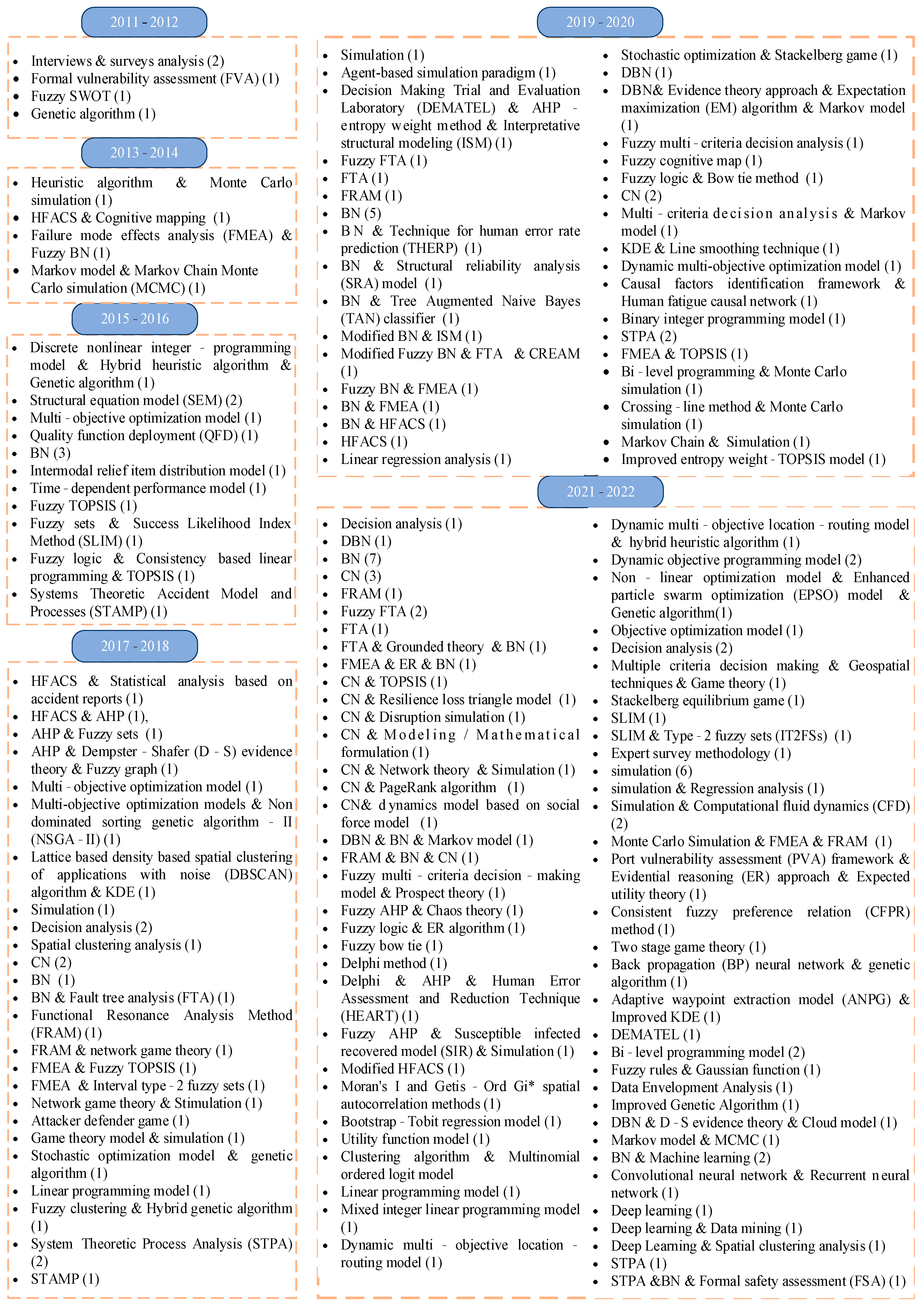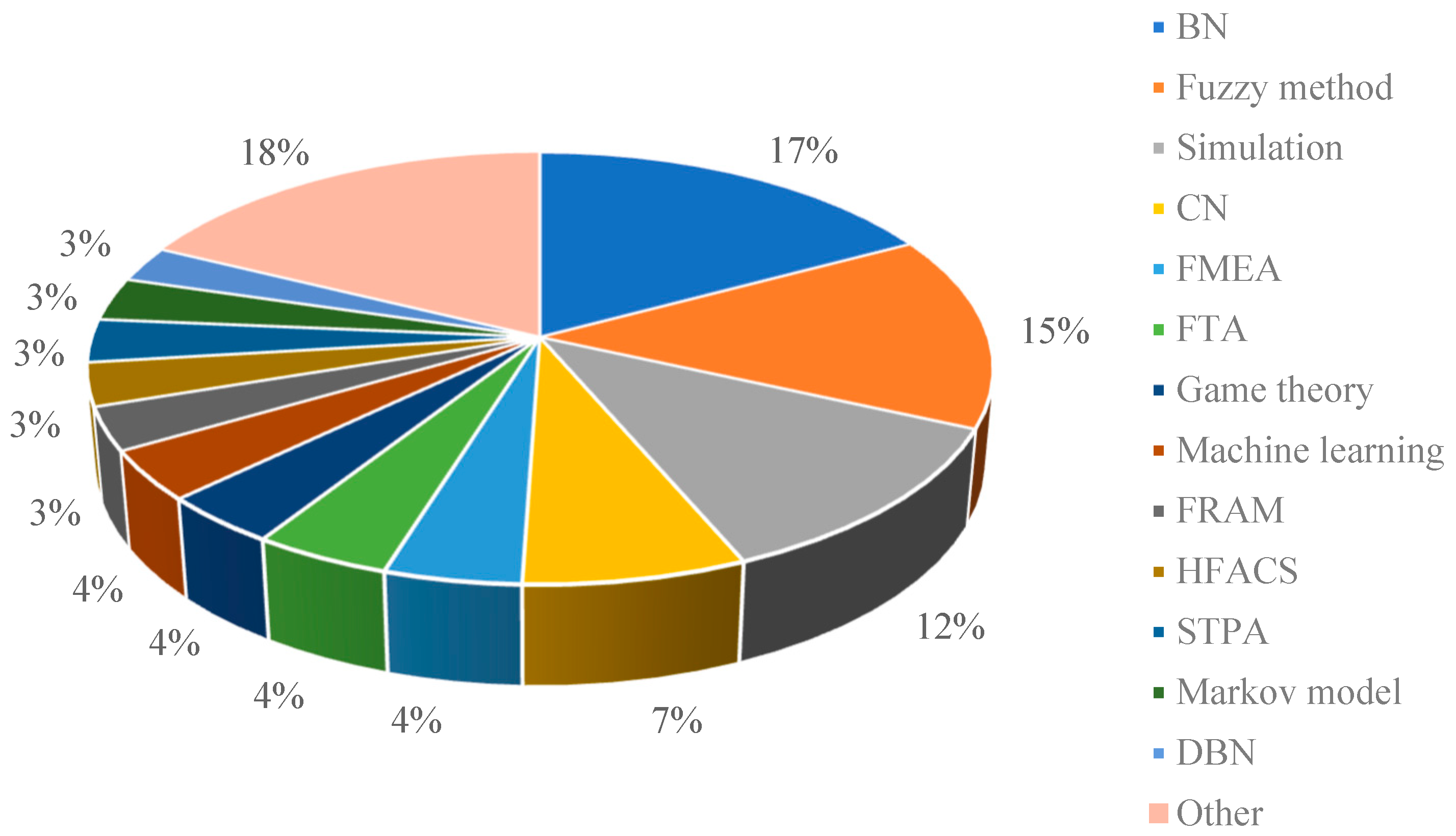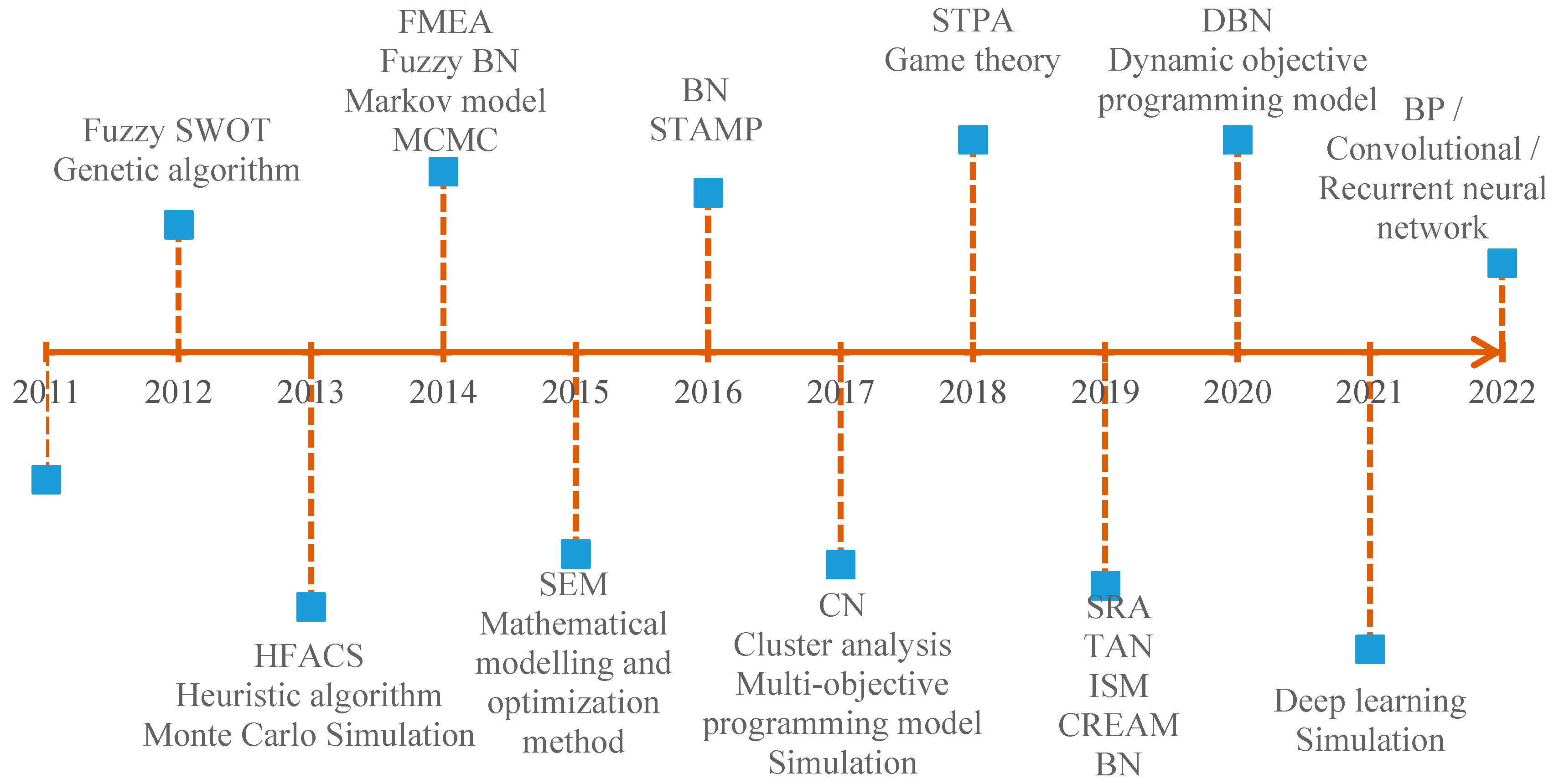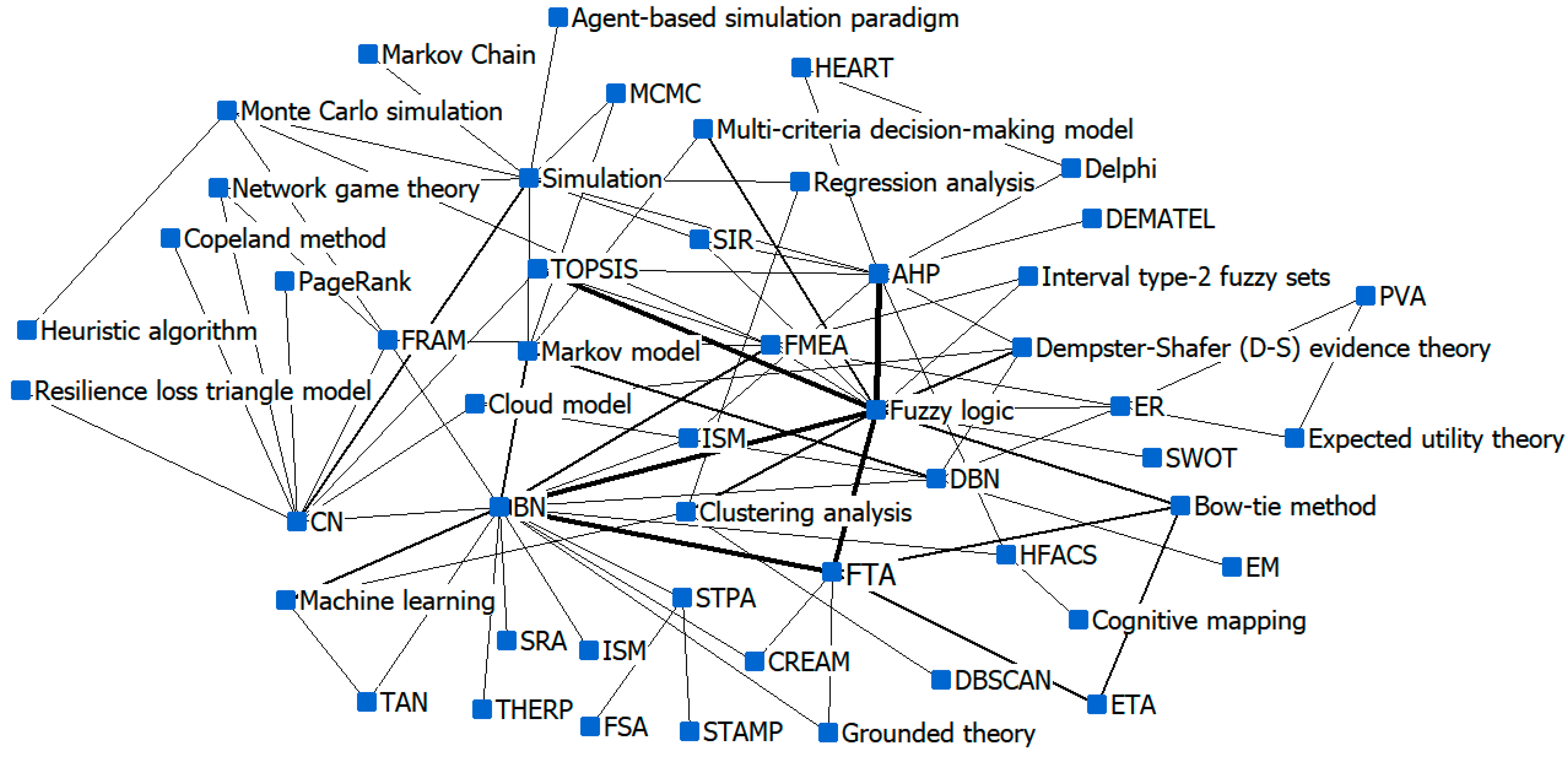You're using an outdated browser. Please upgrade to a modern browser for the best experience.

Submitted Successfully!
Thank you for your contribution! You can also upload a video entry or images related to this topic.
For video creation, please contact our Academic Video Service.
| Version | Summary | Created by | Modification | Content Size | Created at | Operation |
|---|---|---|---|---|---|---|
| 1 | Weiliang Qiao | -- | 1918 | 2024-03-04 02:51:19 | | | |
| 2 | Rita Xu | Meta information modification | 1918 | 2024-03-04 04:17:55 | | |
Video Upload Options
We provide professional Academic Video Service to translate complex research into visually appealing presentations. Would you like to try it?
Cite
If you have any further questions, please contact Encyclopedia Editorial Office.
Xu, M.; Ma, X.; Zhao, Y.; Qiao, W. Maritime Transportation Safety Management. Encyclopedia. Available online: https://encyclopedia.pub/entry/55795 (accessed on 25 December 2025).
Xu M, Ma X, Zhao Y, Qiao W. Maritime Transportation Safety Management. Encyclopedia. Available at: https://encyclopedia.pub/entry/55795. Accessed December 25, 2025.
Xu, Minqiang, Xiaoxue Ma, Yulan Zhao, Weiliang Qiao. "Maritime Transportation Safety Management" Encyclopedia, https://encyclopedia.pub/entry/55795 (accessed December 25, 2025).
Xu, M., Ma, X., Zhao, Y., & Qiao, W. (2024, March 04). Maritime Transportation Safety Management. In Encyclopedia. https://encyclopedia.pub/entry/55795
Xu, Minqiang, et al. "Maritime Transportation Safety Management." Encyclopedia. Web. 04 March, 2024.
Copy Citation
Maritime transportation plays a critical role in global trade, and studies on maritime transportation safety management are of great significance to the sustainable development of the maritime industry. Consequently, there has been an increasing trend recently in studies on maritime transportation safety management, especially in terms of safety risk analysis and emergency management.
maritime transportation
emergency management
safety risk analysis
1. Introduction
Maritime transportation is critical for global trade, and over 80% of global goods are delivered by ocean shipping [1]. According to the “Review of Maritime Transport 2022” issued by the United Nations Conference on Trade and Development, the global commercial fleet has increased sharply in the last three decades, which reflects an increase in global maritime transportation activities. The safety-related issues associated with maritime transportation are highly concerned with minimizing maritime accidents and their impacts on human life and the ocean environment. For this purpose, various risks involved in maritime transportation must be controlled to an acceptable/tolerable level [2]. In addition, in the case of heavy casualties or large-scale oil spill pollution, effective emergency management is critical to reduce the damage caused by these events. Meanwhile, search and rescue (SAR) requirements at sea also require effective emergency responses to reduce the loss of human life. To maintain maritime transportation safety at a satisfactory level, the International Maritime Organization (IMO) has taken proactive measures to promote safety in the maritime industry [3][4][5], such as the International Convention for the Safety of Life at Sea (SOLAS), the International Convention on Standards of Training, Certification and Watchkeeping for Seafarers (STCW), and the International Safety Management Code (ISM). The International Convention on Maritime Search and Rescue has also come into use to enhance emergency collaboration globally. At the national level, various regulations and measures have also been adopted. For instance, the UK government supports the promotion of autonomous ships and invests actively in the research and development of new space technologies. The Danish government is improving the maritime information and communications technology (ICT) infrastructure under the regulatory framework of the European Union (EU) and the IMO. The Korean government has strengthened maritime safety through digital technology and seeks to create a big data platform in the maritime and fisheries sectors. However, catastrophic consequences in terms of human life losses, damage to commodities, and environmental pollution are still frequently reported. For instance, according to a report issued by the Ministry of Transport of the P. R. of China, there were a total of 237 human lives lost or missing and 83 vessels sunk in 2018 [6]. The European Maritime Safety Agency (EMSA) also reported a total of 230 vessel losses during 2011–2018 [7].
2. Methodology for Maritime Safety and Emergency Management
2.1. Overview of the Research Methods
Figure 1 illustrates an overview of the research methods used in maritime transportation safety and emergency management.

Figure 1. Overview of the methods employed in maritime safety and emergency management.
There are still traditional risk assessment methods that remain widely used, despite the emergence of new methods in recent years. The early studies in maritime accident research usually adopted very basic methods, such as interviews and surveys analysis, while recent studies often used multi-disciplinary approaches and comprehensive analyses. Many different approaches have been developed to address maritime transportation safety and emergency management problems. Recently, new methods that have appeared in maritime safety and emergency management research include STPA, cognitive reliability error analysis method (CREAM), DBN, emergency assessment-based simulation [8], probabilistic risk assessment-based simulation [9], resilience assessment-based simulation [10], and mathematical modeling and optimization methods, such as non-linear optimization and enhanced particle swarm optimization (EPSO) models [11], multi-objective particle swarm algorithm [12], and dynamic multi-objective optimization model [13]. At present, machine learning is introduced to improve maritime safety and management.
Model extension has occurred alongside the introduction of new models to this research area. Ung [14] extended the CREAM approach by incorporating BN and FTA in a fuzzy environment.
Chen et al. [15] proposed the HFACS, which has been used to identify human errors in maritime accidents. Akyuz combined the HFACS approach with the analytic hierarchy process (AHP) to evaluate potential operational causes in maritime accidents [16]. Uğurlu et al. integrated the HFACS and BN to analyze maritime collision, grounding, and sinking accidents [17]. To improve port safety, BN and FMEA were combined to assess the criticality of the hazardous events by [18]. Yuan et al. [19] combined BN and FTA to study the causal factors in emergency processes in response to fire accidents for oil gas storage. Likewise, Wang et al. [20] used BN and FTA to assess the critical risk factors in ship fire accidents. Then, Abaei et al. [21] linked BN and machine learning to analyze the resilience of unattended machinery plants in autonomous ships.
Figure 2 shows the statistics of the main research methods used in the literature. More than half of the articles used quantitative analysis to study maritime transportation safety and emergency management problems. Meanwhile, it can be seen that BN, fuzzy logic, simulation, CN, FMEA, FTA, game theory, machine learning, FRAM, HFACS, STPA, Markov model, and DBN are the most commonly used measurement methods in the field of maritime transportation safety and emergency management.

Figure 2. Statistics of the main research methods used in the literature.
According to Figure 2, the most frequently used method was the BN method. The application of the BN method mainly focuses on the following two aspects: (1) study of the causal correlation degree of factors from the accident causation theory perspective [19]; (2) risk prediction carried out using the BN model [22][23]. Maritime transportation has great uncertainty, which is affected by system complexity, environmental factors, human factors, and organizational factors [24]. BN is a suitable method for risk assessment and decision making. Furthermore, BN can replace FTA as a classification method and can take into account the joint effect of several events. This is the reason why the BN model is popular in the field of maritime transportation safety and emergency management. However, data availability is one of the biggest problems in calculating the failure rate in the maritime industry. In order to solve this limitation, fuzzy methods are widely introduced to deal with the uncertain data. Simulation is the third most frequently used tool; the risk of maritime accidents has a probabilistic attribute, and simple statistical data are not sufficient to explain and predict the risk of accidents over time. The simulation method can be used to analyze the influence of many uncertain factors. Faghih-Roohi et al. [25] combined Monte Carlo simulation and the Markov model to estimate the probability of maritime transport accidents for the first time. Huang et al. [26] adopted the Monte Carlo method to calculate the probability of a ship crossing the channel boundary. Zou and Chen [27] used Monte Carlo simulation to assess the resilience of the maritime supply chain and analyzed the impact of interruption scenarios for maritime transportation systems.
2.2. The Progressive Trend of Research Methods
Figure 3 illustrates the progressive trend of the primary methods and models utilized in maritime transportation safety and emergency management between 2011 and 2022. The advancement of technology has expanded the application scope and enhanced their accuracy in various scenarios. Between 2011 and 2013, statistical analysis and framework-based analysis were the predominant methods employed in maritime transportation safety and emergency management. Traditional risk analysis techniques, such as FVA, SWOT, and HFACS, were widely applied during this period. Heuristic algorithms were used to solve complex problems by iteratively exploring and evaluating a large search space. From 2014 to 2016, fuzzy BN, Markov model, MCMC, mathematical modeling, and STAMP were employed to identify the maritime transportation system risk. From 2017 to 2019, CN, cluster analysis, multi-objective optimization models, simulation, game theory, STPA, and ISM were introduced to study maritime transportation safety and emergency management issues. Human reliability analysis methods, such as CREAM and THERP, were employed to identify human errors in maritime risk. More specific and detailed research methods were used to evaluate maritime safety and emergency management. From 2020 to 2022, methods, such as DBN and dynamic programming models, were utilized to assess risks and optimized paths in the maritime safety and emergency management field. Additionally, the development of research methods has facilitated the application of machine learning algorithms, such as BP neural networks, convolutional neural networks, and recurrent neural networks in maritime safety and emergency management.

Figure 3. The progressive trend of research methods.
2.3. Spatial Interaction Visualization of Research Methods
Figure 4 shows the spatial interaction visualization of research methods. Let graph 𝐺 (𝑉, 𝐸, 𝑊) be the representation of the main research method network. In this graph, 𝑉 is the set of nodes representing methods, 𝐸 is the set of edges representing the linking between methods, and 𝑊 is the weight of edge. Graph 𝐺 is represented as a weighted adjacency matrix 𝐀, whose elements are 𝑎𝑖𝑗=𝑤𝑖𝑗. If link (𝑖,𝑗)∈𝐸, 𝑖,𝑗∈𝑉, 𝑎𝑖𝑗=𝑤𝑖𝑗, where 𝑤𝑖𝑗 indicates the number of methods connecting method i and method 𝑗; otherwise, 𝑎𝑖𝑗=0. Finally, the spatial interaction visualization of main research methods is connected in a CN, as given Figure 4.

Figure 4. Spatial interaction visualization of the methods and models used in the literature.
Fuzzy logic can deal with uncertainty and vagueness and can be integrated with other methods to handle imprecise inputs. Fuzzy set analysis has been widely used together with methods, such as FTA, SWOT, FMEA, ER, bow-tie method, BN, and AHP. For example, Zaib et al. [28] analyzed human error using a fuzzy FTA. Jiang et al. [29] used the fuzzy evidential reasoning (ER) algorithm to estimate the vulnerability of straits or canals in maritime transportation. Furthermore, Fuzzy TOPSIS was combined with FMEA to analyze port risks [30], while interval type-2 fuzzy sets were integrated with FMEA to conduct oil spill risk assessments [31].
By combining BN with other methods, a more comprehensive analysis method can be adopted, such as BN-FMEA [18], BN-FTA [20], and BN machine learning [21]. The use of BN in risk assessments has made significant advancements; scholars have begun to explore the integration of time-sliced temporal data into BN models, known as DBN [32], which is used to model the evolution of a system over time. For instance, Jiang and Lu [22] presented a DBN model for assessing the dynamic risk of maritime accidents.
In recent years, scholars have attempted to combine CN with other methods to study the maritime transportation network from the perspective of resilience. Yang and Liu [10] constructed the Maritime Silk Road shipping network using the CN method and then used disruption simulations to analyze the resilience of the Maritime Silk Road transportation network, identifying dominant and weak port nodes. Wan et al. [33] used the resilience loss triangle model to analyze the performance of liner shipping networks (LSNs) during recovery, and the rationality and feasibility of the developed indicators in LSN-aided decision making were tested from the recovery strategies based on the degree of centrality, closeness of the degree of centrality, and betweenness centrality. Poo and Yang [34] assessed the global shipping network focusing on climate resilience by using a methodology that combined CN and a ship routing optimization model.
Simulation methods were used to study the operation of real-world or theoretical processes or systems in various pre-defined environments for different purposes (e.g., numerical testing and exploring new states) [35]. Simulations provide a more comprehensive understanding and accurate prediction of the impacts resulting from different game strategies. Game theory and simulation have been combined to discuss the impact of investment behavior on maritime transportation. In order to provide insights into resilience improvements for maritime transportation, Chen et al. [36] used the network game theory to investigate the impact of participants’ investment decisions on maritime logistics network resilience and simulated participants’ investment strategies in the face of catastrophic accidental explosions, labor strikes, and terrorist attacks. Liu et al. [37] applied the game theory model to study the pre-disaster investment strategies of two neighboring seaports and conducted a numerical simulation to evaluate the stability of a co-operation mechanism.
References
- UNCTAD. Review of Maritime Transport 2022. 2022. Available online: https://unctad.org/system/files/official-document/rmt2022_en.pdf (accessed on 18 October 2023).
- Arici, S.S.; Akyuz, E.; Arslan, O. S Application of fuzzy bow-tie risk analysis to maritime transportation: The case of ship collision during the STS operation. Ocean Eng. 2020, 217, 107960.
- Størkersen, K.V.; Antonsen, S.; Kongsvik, T. One size fits all? Safety management regulation of ship accidents and personal injuries. J. Risk Res. 2017, 20, 1154–1172.
- Yoo, Y.; Park, H.S. Qualitative risk assessment of cybersecurity and development of vulnerability enhancement plans in consideration of digitalized ship. J. Mar. Sci. Eng. 2021, 9, 565.
- Zhang, L.; Wang, H.; Meng, Q.; Xie, H. Ship accident consequences and contributing factors analyses using ship accident investigation reports. Proc. Inst. Mech. Eng. Part O-J. Risk Reliab. 2019, 233, 35–47.
- MOT. Statistical Bulletin on the Development of Transportation Industry; Ministry of Transport of China: Beijing, China, 2019.
- EMSA. Annual Overview of Marine Casualties and Incidents; European Maritime Safety Agency: Lisbon, Portugal, 2019.
- Zhu, M.; Huang, L.; Huang, Z.; Shi, F.; Xie, C. Hazard analysis by leakage and diffusion in Liquefied Natural Gas ships during emergency transfer operations on coastal waters. Ocean Coast. Manag. 2022, 220, 106100.
- Fu, S.; Yu, Y.; Chen, J.; Han, B.; Wu, Z. Towards a probabilistic approach for risk analysis of nuclear-powered icebreakers using FMEA and FRAM. Ocean Eng. 2022, 260, 112041.
- Yang, Y.; Liu, W. Resilience analysis of maritime silk road shipping network structure under disruption simulation. Mar. Sci. Eng. 2022, 10, 617.
- Sun, Y.; Ling, J.; Chen, X.; Kong, F.; Hu, Q.; Biancardo, S.A. Exploring Maritime Search and Rescue Resource Allocation via an Enhanced Particle Swarm Optimization Method. J. Mar. Sci. Eng. 2022, 10, 906.
- Zhang, L.; Lu, J.; Yang, Z. Optimal scheduling of emergency resources for major maritime oil spills considering time-varying demand and transportation networks. Eur. J. Oper. Res. 2021, 293, 529–546.
- Huang, X.; Ren, Y.; Zhang, J.; Wang, D.; Liu, J. Dynamic Scheduling Optimization of Marine Oil Spill Emergency Resource. J. Coast. Res. 2020, 107, 437–442.
- Ung, S.T. Evaluation of human error contribution to oil tanker collision using fault tree analysis and modified fuzzy Bayesian Network based CREAM. Ocean Eng. 2019, 179, 159–172.
- Chen, S.T.; Wall, A.; Davies, P.; Yang, Z.; Wang, J.; Chou, Y.-H. A Human and Organisational Factors (HOFs) analysis method for marine casualties using HFACS-Maritime Accidents (HFACS-MA). Saf. Sci. 2013, 60, 105–114.
- Akyuz, E. A marine accident analysing model to evaluate potential operational causes in cargo ships. Saf. Sci. 2017, 92, 17–25.
- Uğurlu, Ö.; Yıldız, S.; Loughney, S.; Wang, J.; Kuntchulia, S.; Sharabidze, I. Analyzing collision, grounding, and sinking accidents occurring in the Black Sea utilizing HFACS and Bayesian networks. Risk Anal. 2020, 40, 2610–2638.
- Alyami, H.; Lee, P.T.W.; Yang, Z.; Riahi, R.; Bonsall, S.; Wang, J. An advanced risk analysis approach for container port safety evaluation. Marit. Policy Manag. 2014, 41, 634–650.
- Yuan, C.; Cui, H.; Tao, B.; Ma, S. Cause factors in emergency process of fire accident for oil–gas storage and transportation based on fault tree analysis and modified Bayesian network model. Energy Environ. 2018, 29, 802–821.
- Wang, L.; Wang, J.; Shi, M.; Fu, S.; Zhu, M. Critical risk factors in ship fire accidents. Marit. Policy Manag. 2021, 48, 895–913.
- Abaei, M.M.; Hekkenberg, R.; BahooToroody, A.; Banda, O.V.; van Gelder, P. A probabilistic model to evaluate the resilience of unattended machinery plants in autonomous ships. Reliab. Eng. Syst. Saf. 2022, 219, 108176.
- Jiang, M.; Lu, J. Maritime accident risk estimation for sea lanes based on a dynamic Bayesian network. Marit. Policy Manag. 2020, 47, 649–664.
- Wan, C.; Yan, X.; Zhang, D.; Qu, Z.; Yang, Z. An advanced fuzzy Bayesian-based FMEA approach for assessing maritime supply chain risks. Transp. Res. Part E-Logist. Transp. Rev. 2019, 125, 222–240.
- Trucco, P.; Cagno, E.; Ruggeri, F.; Grande, O. A Bayesian Belief Network modelling of organisational factors in risk analysis: A case study in maritime transportation. Reliab. Eng. Syst. Saf. 2008, 93, 845–856.
- Faghih-Roohi, S.; Xie, M.; Ng, K.M. Accident risk assessment in marine transportation via Markov modelling and Markov Chain Monte Carlo simulation. Ocean Eng. 2014, 91, 363–370.
- Huang, J.C.; Nieh, C.Y.; Kuo, H.C. Risk assessment of ships maneuvering in an approaching channel based on AIS data. Ocean Eng. 2019, 173, 399–414.
- Zou, Q.; Chen, S. Resilience Modeling of Interdependent Traffic-Electric Power System Subject to Hurricanes. J. Infrastruct. Syst. 2020, 26, 04019034.
- Zaib, A.; Yin, J.; Khan, R.U. Determining Role of Human Factors in Maritime Transportation Accidents by Fuzzy Fault Tree Analysis (FFTA). J. Mar. Sci. Eng. 2022, 10, 381.
- Jiang, M.; Wang, B.; Hao, Y.; Chen, S.; Lu, J. Vulnerability assessment of strait/canals in maritime transportation using fuzzy evidential reasoning approach. Risk Anal. 2022, 43, 1795–1810.
- Şenel, M.; Şenel, B.; Havle, C.A. Risk analysis of ports in Maritime Industry in Turkey using FMEA based intuitionistic Fuzzy TOPSIS Approach. ITM Web Conf. 2018, 22, 01018.
- Akyuz, E.; Celik, E. A quantitative risk analysis by using interval type-2 fuzzy FMEA approach: The case of oil spill. Marit. Policy Manag. 2018, 45, 979–994.
- Huang, X.; Wen, Y.; Zhang, F.; Han, H.; Huang, Y.; Sui, Z. A review on risk assessment methods for maritime transport. Ocean Eng. 2023, 279, 114577.
- Wan, C.; Tao, J.; Yang, Z.; Zhang, D. Evaluating recovery strategies for the disruptions in liner shipping networks: A resilience approach. Int. J. Logist. Manag. 2022, 33, 389–409.
- Poo, M.C.-P.; Yang, Z. Optimising the resilience of shipping networks to climate vulnerability. Marit. Policy Manag. 2022, 1–20.
- Wan, C.; Yang, Z.; Zhang, D.; Yan, X.; Fan, S. Resilience in transportation systems: A systematic review and future directions. Transp. Rev. 2018, 38, 479–498.
- Chaal, M.; Bahootoroody, A.; Basnet, S.; Banda, O.A.V.; Goerlandt, F. Towards system-theoretic risk assessment for future ships: A framework for selecting Risk Control Options. Ocean Eng. 2022, 259, 111797.
- Liu, N.; Gong, Z.; Xiao, X. Disaster prevention and strategic investment for multiple ports in a region: Cooperation or not. Marit. Policy 2018, 45, 585–603.
More
Information
Subjects:
Transportation
Contributors
MDPI registered users' name will be linked to their SciProfiles pages. To register with us, please refer to https://encyclopedia.pub/register
:
View Times:
686
Revisions:
2 times
(View History)
Update Date:
04 Mar 2024
Notice
You are not a member of the advisory board for this topic. If you want to update advisory board member profile, please contact office@encyclopedia.pub.
OK
Confirm
Only members of the Encyclopedia advisory board for this topic are allowed to note entries. Would you like to become an advisory board member of the Encyclopedia?
Yes
No
${ textCharacter }/${ maxCharacter }
Submit
Cancel
Back
Comments
${ item }
|
More
No more~
There is no comment~
${ textCharacter }/${ maxCharacter }
Submit
Cancel
${ selectedItem.replyTextCharacter }/${ selectedItem.replyMaxCharacter }
Submit
Cancel
Confirm
Are you sure to Delete?
Yes
No




